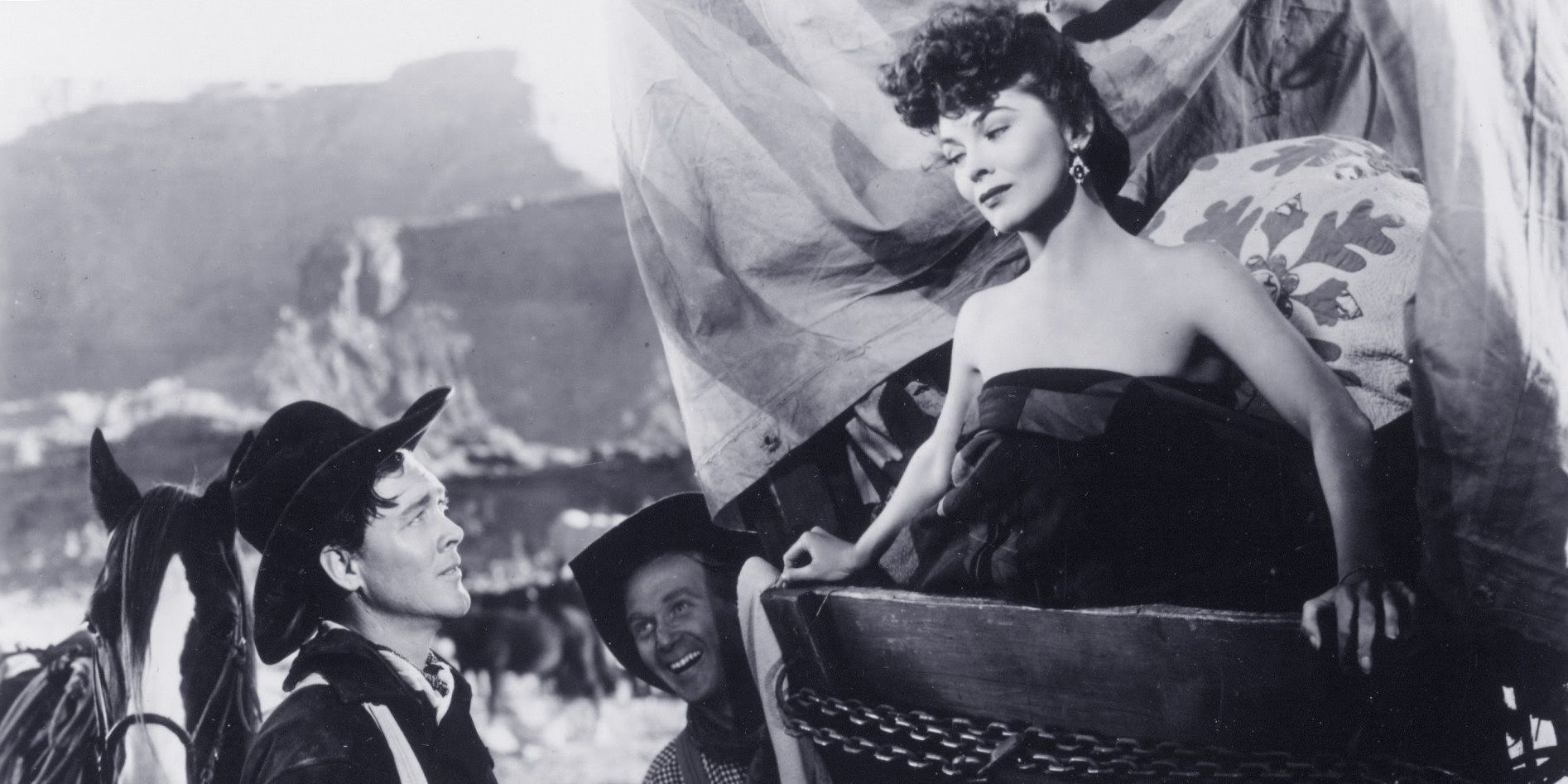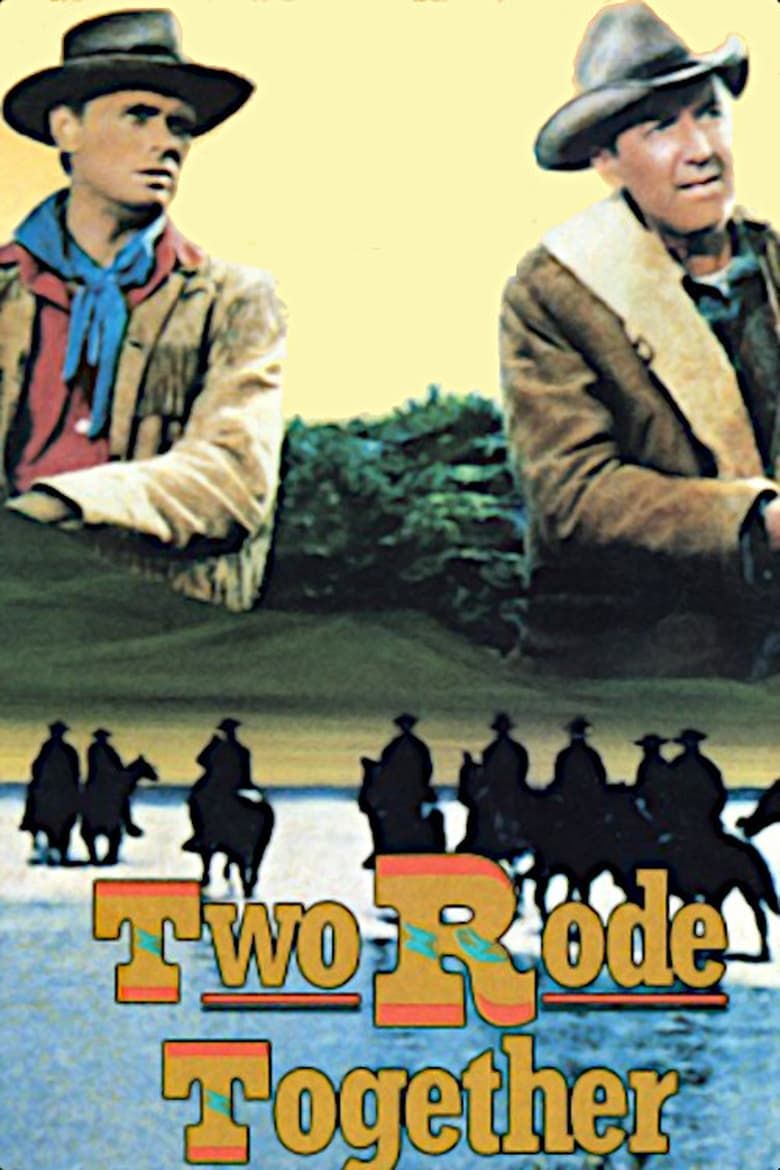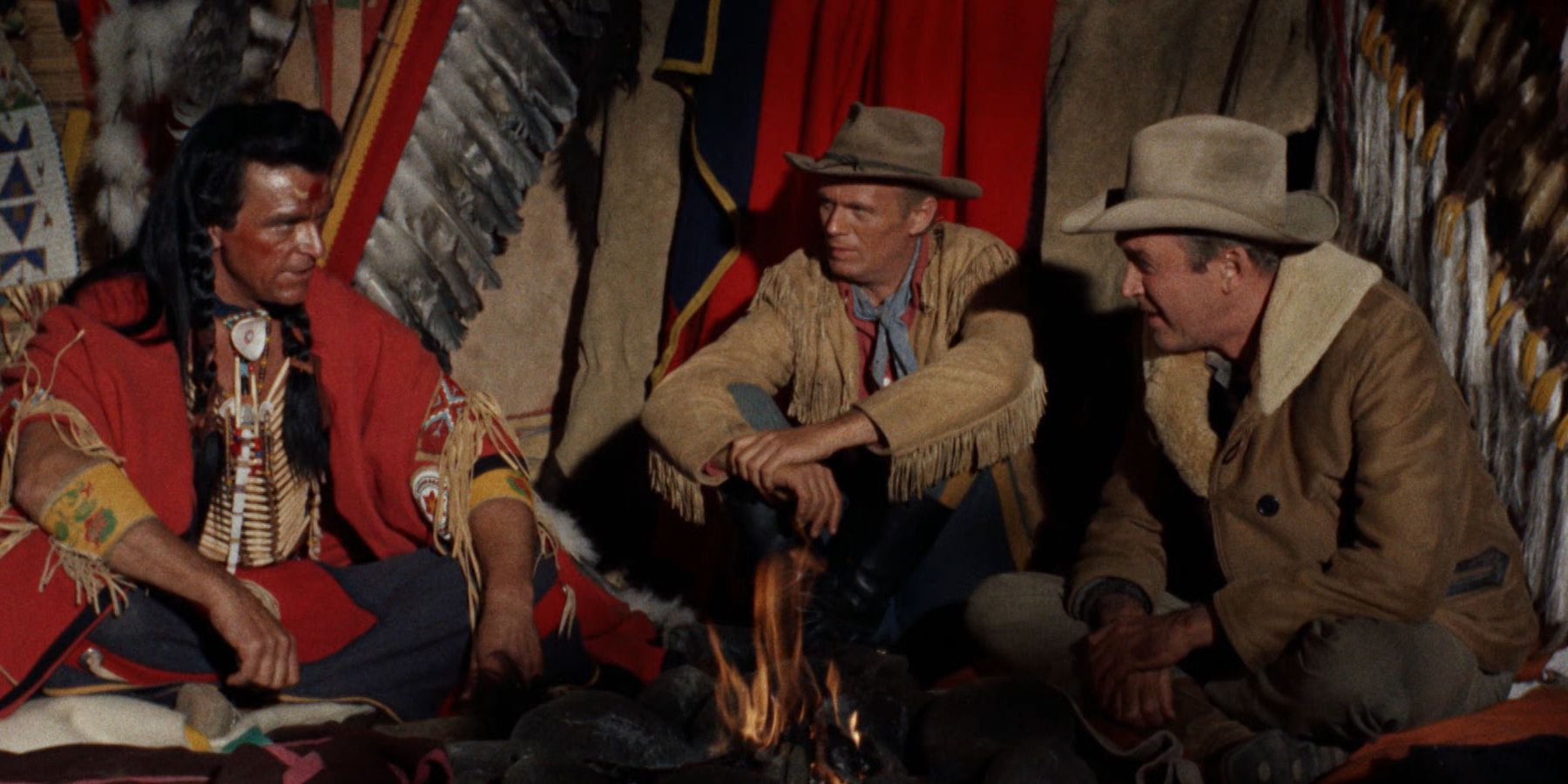Towards the end of his legendary filmmaking career, John Ford found himself reckoning with what he brought to the screen. Beginning with The Searchers and continuing through The Man Who Shot Liberty Valance, Ford, a WWII Navy veteran, presented himself as an optimistic American full of idealism due to his picaresque tales and painterly vision of the Old West. On the surface of his beautiful work is a glossy painting, but underneath it all is sobering commentary filled with pathos about American culture and history that remains relevant today. In Ford’s world, Americana has been built upon a foundation of myths, ones that propagate racist ideology and a skewed portrait of the white savior, which is explored with a meditative but fierce scrutiny in one of Ford’s underrated gems, Two Rode Together, carried by a stellar two-hander in Jimmy Stewart and Richard Widmark.
John Ford Reexamines Western Politics and Sociology in ‘Two Western Together’
John Ford’s films are often in conversation with each other, sometimes films released decades apart. With Two Rode Together, Ford made a fascinating B-side to The Searchers, a film that follows a heroic odyssey to rescue a kidnapped girl by a Comanche tribe undermined by the bigotry and hate-fueled vengeance of Civil War veteran Ethan Edwards (John Wayne). Where this film takes audiences through the gorgeous vistas of Monument Valley from the eyes of a racist, Two Rode Together, penned by Searchers‘ writer Frank Nugent, tracks two stalwart law officers fulfilling their duties in a bigoted community. Ford’s 1961 late-period Western follows a cynical Marshal Guthrie McCabe (Stewart) and Army Lieutenant Jim Gary (Widmark) negotiating with a Comanche tribe to release white captives, notably the beloved Marty Purcell (Shirley Jones). When two of the captives are released, their reintegration into their native community has its consequences.
With his eclectic stock company at his disposal, John Ford loved using ensemble casts to tell stories about a family, community, or infantry, including the diverse group of travelers in Stagecoach and Wagon Master and the poverty-stricken families in The Grapes of Wrath and How Green Was My Valley. In Two Rode Together, Ford crafts two expansive worlds in the white frontier community and the Comanche tribe. He seamlessly captures a documentary-like portrait of disparate communities and the tribal complex prevalent on both fronts.

Related
This Once-Overlooked Classic Western Is One of John Ford’s Best Movies
It is a film the legendary director said came closest to his artistic vision.
Ford, who never shied away from a crabby remark, disliked the film and its source material, calling it “the worst piece of crap I’ve done in 20 years.” Unlike his previous films, Two Rode Together is light on painterly romanticism, and it has an unusually shaggy pace that understandably leaves viewers awaiting a major dramatic payoff. However, Ford’s visual restraint grounds this mythical environment to resemble modern-day America. After all, divisiveness between communities and the embittered sentiments towards minority groups is unfortunately not a bygone phenomenon.
Jimmy Stewart Is a Law Officer Without a Purpose in ‘Two Rode Together’
When its protagonists, McCabe and Gary, ride through the open country and reflect on their journey and life, Two Rode Together shines and demonstrates Ford’s chops as a humanist, character-driven filmmaker. Jimmy Stewart and Richard Widmark, known for playing earnest Boy Scouts and sinister heavies, respectively, give understated, wistful performances. The two quietly retreat from their typecasting, as Stewart’s McCabe is a corrupt Marshal who gets a taste of local businesses’ incomes, and Widmark’s Gary is a surprisingly sympathetic figure who believes diplomacy can heal the tension between the rival lands. McCabe presents himself as a dutiful law officer, but his inscrutable nature and indifference towards any conflict besides his personal woes with women and business affairs shows his hand as a man without a purpose.
Before the phrase “One Perfect Shot” entered film parlance, every shot crafted by John Ford was a work of perfection, from his use of door frames to horizons that never sat in the center of the screen. With Two Rode Together, Ford opted for a minimalist but soulful visual language. The signature image of the film captures McCabe and Gary in a two-shot sitting by a river bank. In this four-minute unbroken scene, the two discuss their relationship struggles, the capitalist demands of America, and the never-ending conflict with local Comanche tribes.
The elegant simplicity of Ford’s direction extracts an unassuming level of Western poetry in their discussion as they smoke their cigars in comfort. McCabe reveals that his insecure relationship with his mistress, Belle (Annelle Hayes), is the impetus for his decision to accept this mission. General uncertainties surrounding domestic life, perhaps settling down with a woman, is a common plight for Ford’s protagonists, who carry themselves with a traditional sense of masculinity. On a sobering note, McCabe’s marital engagement to Belle is compromised by their disagreement over the former’s revenue cut from her saloon. This beautifully subdued scene underscores Two Rode Together‘s poignant, but sometimes sloppily conveyed, thesis on the broken promises of American expansion during the 19th century.

Two Rode Together
- Director
- John Ford
- Runtime
- 109 minutes
- Release Date
- July 26, 1961
- Writers
- Frank S. Nugent
- Producers
- Stanley Shpetner
Two Rode Together is currently available to rent or buy on Prime Video in the U.S.





